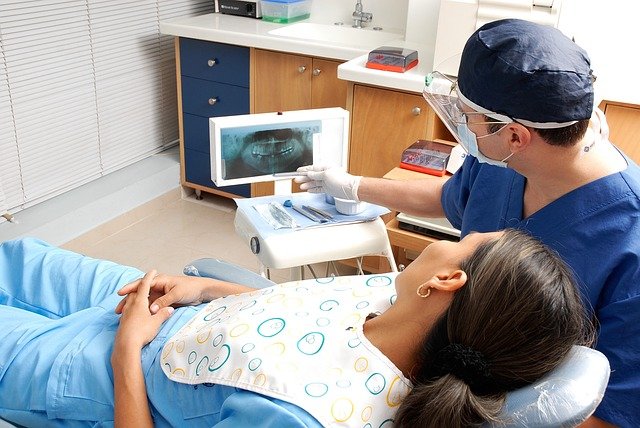Triple Negative Breast Cancer: Key Symptoms and Early Signs
Triple negative breast cancer (TNBC) represents approximately 10-15% of all breast cancer diagnoses and requires early detection for optimal outcomes. This aggressive form of breast cancer lacks three key receptors that many other breast cancers possess, making it distinct in both characteristics and treatment approaches. Recognizing the warning signs and understanding the symptoms can significantly impact treatment success and long-term prognosis for patients facing this diagnosis.

Triple negative breast cancer stands apart from other breast cancer types due to its unique cellular characteristics. Unlike hormone receptor-positive cancers, TNBC cells test negative for estrogen receptors, progesterone receptors, and HER2 protein. This absence of receptors means that common targeted therapies used for other breast cancers are not effective, making early detection and prompt treatment crucial for patient outcomes.
Understanding What TNBC Involves for Patients
TNBC typically affects younger women, with a higher prevalence among African American and Hispanic women. The cancer tends to grow and spread more quickly than other breast cancer types, often appearing as a firm, irregular mass. People are becoming more aware of what TNBC might involve, including its tendency to develop in women under 40 and those with BRCA1 gene mutations. The aggressive nature of this cancer type means that symptoms may develop rapidly, requiring immediate medical attention when detected.
Physical Signs That May Indicate TNBC
The most common early symptom of TNBC is a new lump or mass in the breast tissue. These lumps often feel hard and irregular, unlike the smooth, round cysts that may appear benign. Additional physical signs include changes in breast size or shape, skin dimpling or puckering, nipple discharge that is not breast milk, nipple inversion, and persistent breast or nipple pain. Some patients also experience swelling in the lymph nodes under the arm, above the collarbone, or around the collarbone area.
Could This Help Someone Learning About Breast Cancer Symptoms
Recognizing subtle changes in breast tissue requires regular self-examination and awareness of normal breast characteristics. Many women notice textural changes in their breast tissue, such as thickening or unusual firmness in specific areas. Skin changes may include redness, scaling, or an orange-peel texture known as peau d’orange. These symptoms can develop gradually or appear suddenly, making monthly self-examinations and annual clinical breast exams essential for early detection.
Exploring TNBC-Related Information and Risk Factors
Several factors increase the likelihood of developing TNBC. Age plays a significant role, with most cases occurring in women under 50. Genetic predisposition, particularly BRCA1 mutations, substantially increases risk. Family history of breast or ovarian cancer, previous radiation therapy to the chest area, and certain ethnic backgrounds also contribute to higher risk levels. Some are starting to explore TNBC-related information to better understand these risk factors and their implications for screening recommendations.
Treatment Options and Healthcare Provider Considerations
TNBC treatment typically involves a combination of surgery, chemotherapy, and radiation therapy. Since targeted hormone therapies are ineffective, treatment focuses on destroying cancer cells through conventional methods. Chemotherapy often begins before surgery to shrink tumors, followed by surgical removal and radiation to eliminate remaining cancer cells. Newer treatments, including immunotherapy drugs, show promise for certain TNBC patients.
| Treatment Type | Healthcare Provider | Estimated Cost Range |
|---|---|---|
| Initial Consultation | Oncologist | $300 - $600 |
| Chemotherapy (per cycle) | Cancer Center | $3,000 - $10,000 |
| Surgery (lumpectomy/mastectomy) | Surgical Oncologist | $15,000 - $35,000 |
| Radiation Therapy (full course) | Radiation Oncology Center | $10,000 - $20,000 |
| Immunotherapy (per treatment) | Infusion Center | $5,000 - $15,000 |
Prices, rates, or cost estimates mentioned in this article are based on the latest available information but may change over time. Independent research is advised before making financial decisions.
Educational Resources for TNBC Understanding
More are looking into options related to TNBC education through various channels. Reputable medical organizations provide comprehensive information about symptoms, treatment options, and support resources. Understanding TNBC may offer useful perspective for patients and families navigating diagnosis and treatment decisions. Educational materials from cancer centers, patient advocacy groups, and medical professionals help individuals make informed decisions about their care.
Early detection remains the most critical factor in TNBC treatment success. Regular screening, awareness of symptoms, and prompt medical evaluation of any concerning changes can significantly impact outcomes. While TNBC presents unique challenges due to its aggressive nature and limited targeted treatment options, advances in research continue to improve prognosis and quality of life for patients facing this diagnosis.
This article is for informational purposes only and should not be considered medical advice. Please consult a qualified healthcare professional for personalized guidance and treatment.




